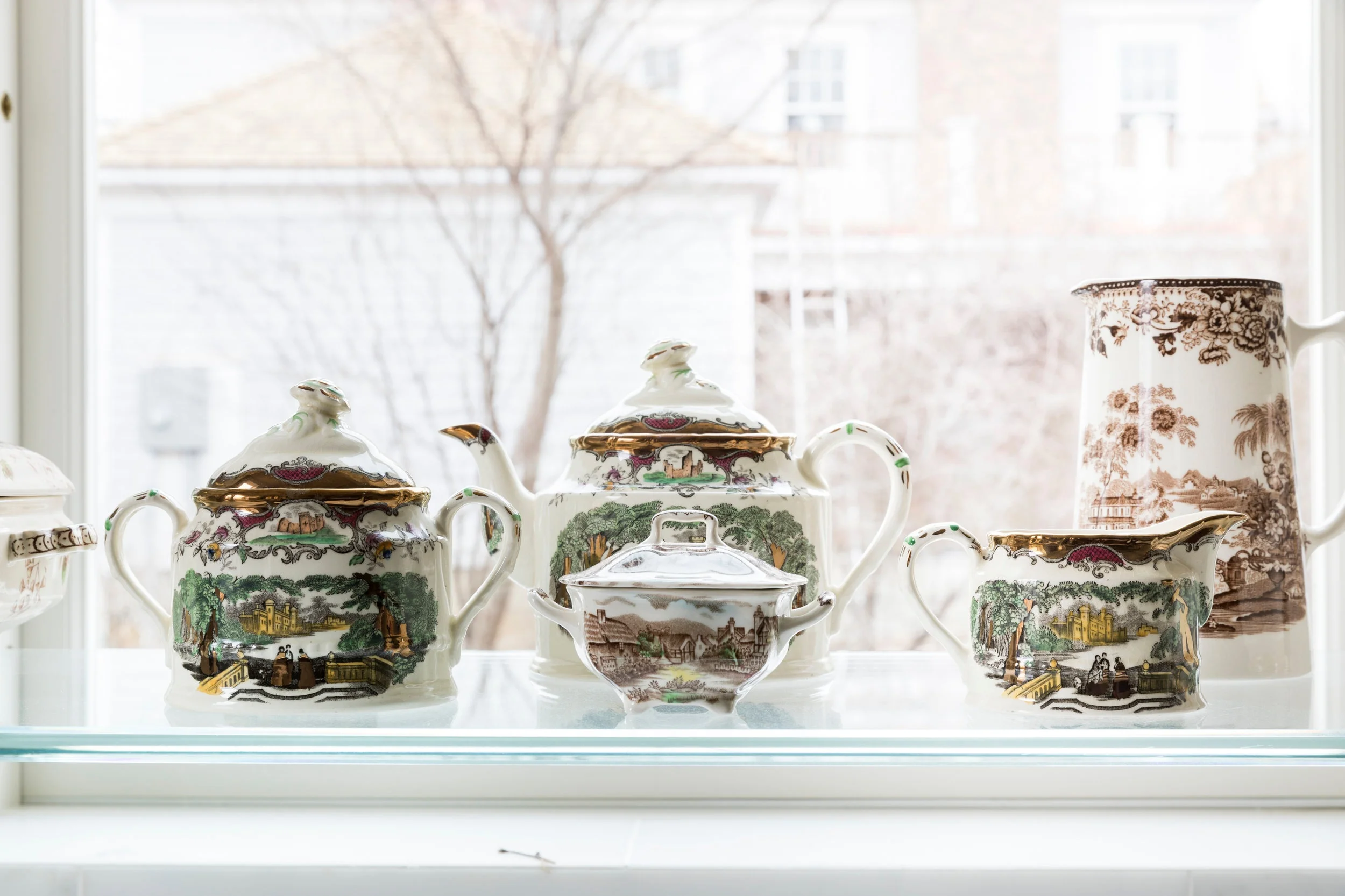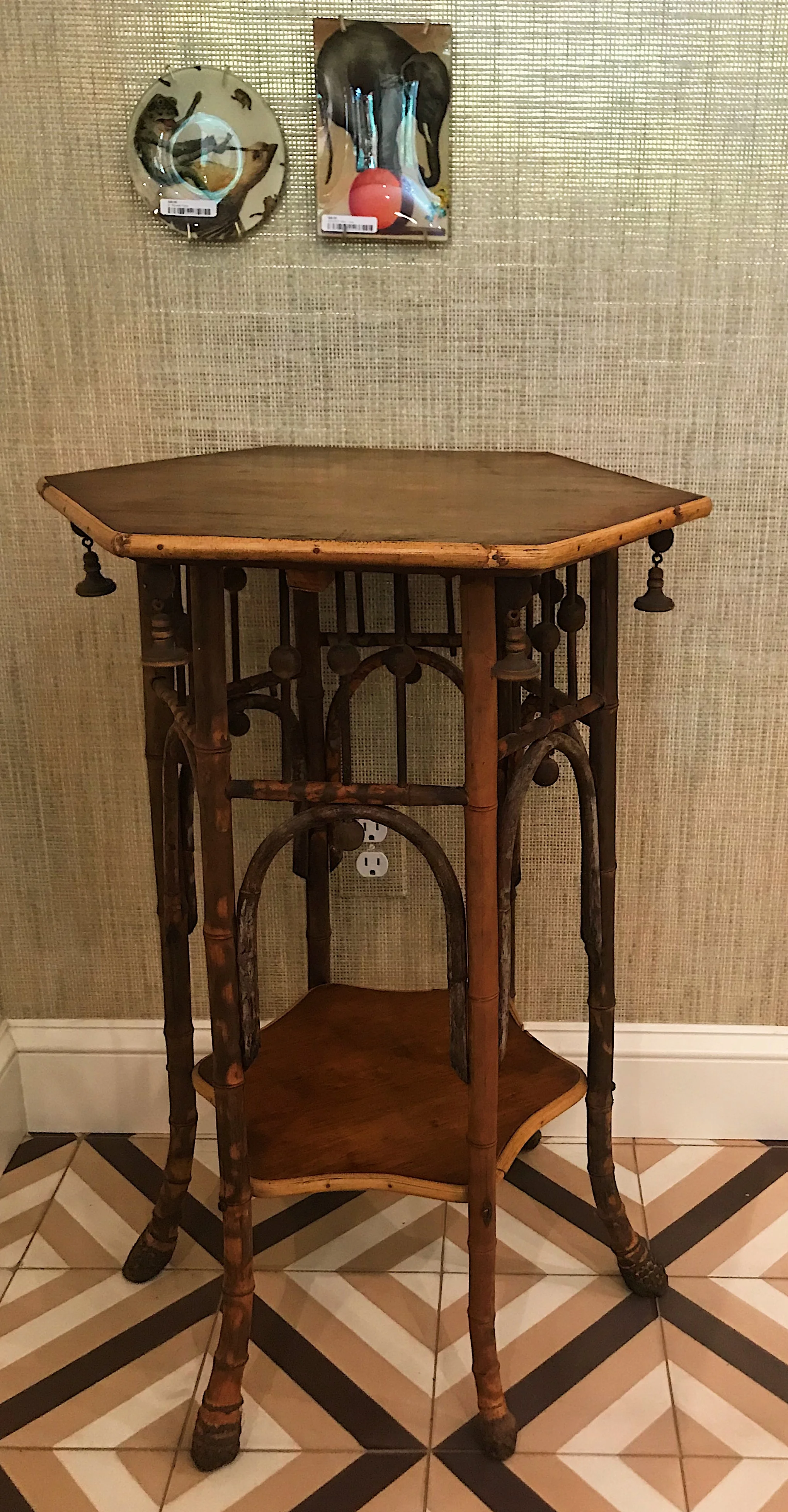AESTHETICISM IS FOR YOU
The word aesthetic can bring about a multitude of thoughts, opinions and emotions for many people. While I love the story behind any object, the value lies in how it makes the end user feel. The deeper meaning of objects is of course rooted in the “why” they make us feel a certain way and curating for my clients is a thoughtful and painstaking process in which I rely on a host of verbal and non verbal cues.
For those who do not know what Aestheticism is, the Aesthetic Movement is one that I’m deeply inspired by and find extremely fascinating. Around the 1860s, some British folks were growing weary of the traditional Victorian style that encompassed the entirety of Britain’s society, culture, art, you name it...cue the Aesthetic Movement. Essentially, it was a wave that overtook Britain (and later America) and placed an emphasis on other artistic mediums and methods like music, fashion and interior design rather than sticking to the notion that art can only be art if it is a painting, sculpture, or architectural endeavor. Because of this preconceived notion of art, people, at the time used other mediums to rebel against the industrialism and modernism that the world was consumed by. There was a need to gain inspiration from a simpler time...to them, this was the Pre-Renaissance/Pre-Raphaelite era, where Japanese motifs were commonly used and things like antiques, Transferware (essentially pottery that has patterns transferred from copper to paper to the pottery itself), bamboo furniture and porcelain thrived. These past trends are exactly what became the new “it” thing and what came to be known as the Aesthetic Movement. This idea of creating “art for art’s sake” became a prevalent motto to live by, and very similar to what was seen and admired during the Arts and Crafts movement occurring right around the same time in the late 1800’s.
The first antique I ever bought was a bamboo inspired armoire. I still love this piece with its mirrored front that my kids learned to dance and walk in front of. It was like no other armoire I grew up with. Tall and slender, casual but elegant, it’s no fuss bones are what I would term boho-chic versus the fussy French pieces of my youth. What I have come to realize about pieces from the Aesthetic Movement is that they are relatable, less imposing and in your face. They are pieces that don’t need to take center stage because they are confident on their own.
R.J. Horner & Co. - Aesthetic Movement Maple Faux Bamboo Armoire
1stDibs - 20th Century English Bamboo Armoire with Rattan
Take, for instance, the small tables I snagged last weekend. The tassel-like details of the small side table remind me of lily-of-the-valley; like someone hung a delicate ornament on a piece rooted in nature. As you might guess, those feet on the table are in fact the roots of the bamboo.
Antique bamboo side table I managed to snag last week!
Transferware, too, has always had a special draw for me. Many of the motifs have a sort of Japanese flair, like the compotes in my shop. These pieces are like etchings for your table; their creamy backgrounds scream “I am old and I have been loved.” Whenever I find a piece similar to these, I immediately think of the many hands that have grazed these pieces in sinks of sudsy, warm water while daydreaming about faraway places. I believe that these porcelain creations were designed to invoke this certain type of nostalgia...all of the pieces rooted in nature, but of a world far from their British homes. You see images of cranes, lotus blooms, scenes of nature with birds taking flight...a picture within a picture. It’s such a fascinating look into the human psyche of yesteryear versus the trends of today where preferences are of a simpler, often oblique, design. Have we fallen out of love with stories? Have we forgotten how to daydream? And, more importantly, are we naturally drawn to pieces that keep us rooted to our ancestors? These are questions I do not know the answers to, but which I often consider.
Two more tiny, antique bamboo tables I scored last week with pieces of Transferware available at our shop.
Compote example of Transferware
Some more examples of Transferware on Porcelain
The aesthetic movement hits home for me in so many ways with its funky furniture, Japonism, and art for arts sake. If you would like to check out the perfect interpretation of the aesthetic movement in an interior design setting, the Freer Sackler gallery of the Smithsonian in Washington, D.C. has the Peacock Room on display which exemplifies the notions previously discussed. Whistler abandoned his original commission for the space in order to create a space that he imagined…much to the owners unhappiness. For those of you who have not had the pleasure of seeing this interior genius, don’t walk...RUN to the exhibit. To check out more information on the exhibit, click here.
The Whistler Peacock Room - Freer Sackler Gallery at the Smithsonian in D.C.


















